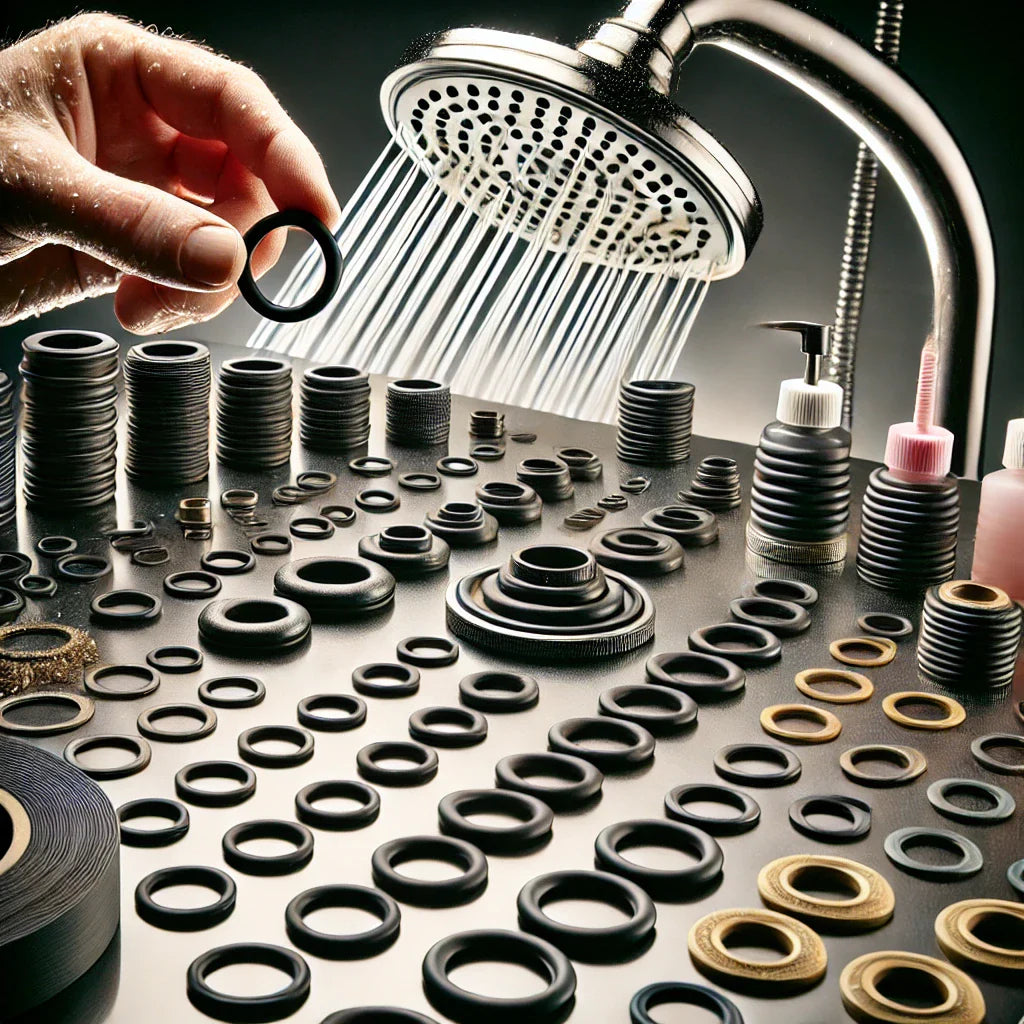
Essential Sealing Tips for Showerheads and Pipes
Share
Sealing showerheads and pipes correctly is crucial for a leak-free and efficient shower experience. This guide focuses on common sealing products like O-rings, gaskets, PTFE tape, and other effective sealing techniques tailored for shower fixtures. Find more sealing solutions in our Sealing & Protection Collection.
1. Common Seal Types for Showerheads and Pipes
Understanding the different types of seal products can help you achieve a watertight connection and prolong the life of your shower components.
- O-Rings: These small, rubber or silicone rings are commonly used in showerheads and hoses to create a tight seal. Their flexibility allows them to compress, filling any gaps between two connected parts.
- Gaskets: Often found between the showerhead and pipe connection, gaskets prevent water from escaping where two surfaces meet. Made from rubber or silicone, they are durable and resistant to pressure and water exposure.
- PTFE Tape (Plumber’s Tape): This thin white tape wraps around pipe threads, creating a watertight seal by filling in tiny gaps in the threading. It’s particularly effective for threaded connections on shower pipes and fixtures.
- Sealant or Caulk: For areas prone to moisture, a small amount of waterproof silicone sealant can provide additional protection. Caulking around joints or seals helps prevent leaks over time.
2. Key Areas to Seal in Showerheads and Pipes
When installing or maintaining a showerhead, it’s essential to pay attention to the following sealing points:
- Showerhead Connection: Ensure the showerhead is tightly sealed where it connects to the arm. Use a gasket or O-ring inside the connection to prevent leaks.
- Pipe Threads: For threaded pipes, wrap PTFE tape around the threads before connecting the showerhead or any other fixture. This tape fills gaps and prevents water from seeping through.
- Handheld Shower Hose: For handheld showers, check for an O-ring inside the connection point between the hose and the fixture. Replacing a worn O-ring can stop leaks and improve water pressure.
- Valve Connections: If you’re installing or repairing valves, using gaskets and PTFE tape will help ensure these critical areas remain watertight.
3. Step-by-Step Tips for Creating a Watertight Seal
Follow these tips to create effective seals for your shower fixtures:
- Check the Condition of Seals: Before installation, inspect O-rings and gaskets for signs of wear. Replace any damaged or cracked seals to avoid potential leaks.
- Wrap PTFE Tape Correctly: Wrap PTFE tape around pipe threads in the same direction as the threading (clockwise) for the best fit. Apply 2-3 layers of tape, covering the threads evenly without overlapping.
- Tighten Fixtures Securely: Screw on the showerhead or pipe fittings by hand, then use a wrench to snug the connection. Avoid over-tightening, as this can damage seals or fittings.
- Test for Leaks: Turn on the water and check all connections. If any areas show signs of leakage, reapply PTFE tape or replace the O-ring/gasket as needed.
4. Maintenance Tips for Seals in Showerheads and Pipes
Regular maintenance of seals will help ensure that your shower remains leak-free over time. Here are some tips:
- Inspect Periodically: Every few months, check the condition of O-rings, gaskets, and PTFE tape on threaded connections. Replace any worn components promptly.
- Clean Mineral Deposits: Mineral buildup can interfere with seals, especially on showerheads. Clean seals and showerheads regularly to prevent blockages and maintain strong seals.
- Replace Worn Parts: If you notice leaks even after tightening or re-sealing, the O-ring or gasket may need replacement. These components are inexpensive and easy to replace, ensuring long-term functionality.
Conclusion
By choosing the right seals and following proper sealing techniques, you can create a reliable, watertight shower setup. Regular maintenance of O-rings, gaskets, and PTFE tape will protect your bathroom from leaks, preserve water pressure, and extend the life of your shower fixtures. A well-sealed shower not only enhances your bathroom’s functionality but also contributes to a comfortable, worry-free experience every day.
